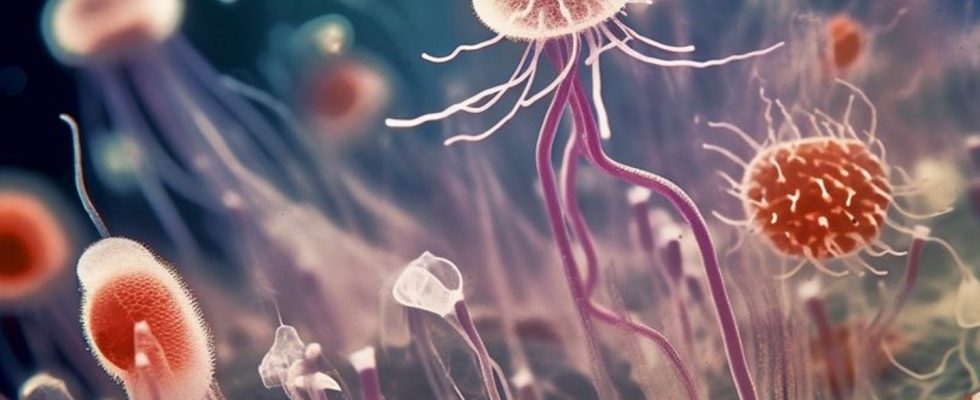Science
Up to 1.6 billion years: traces of early life discovered
Not animal, not plant as we know them today: The artist’s representation of a collection of original eukaryotic organisms of the “Protosterol Biota” colonizing a microbial mat on the sea floor. photo
© Orchestrated in MidJourney by TA 2023/dpa
Researchers have discovered previously unknown life that existed more than a billion years ago. According to this, a fundamental ecological upheaval took place on earth a long time ago.
About a billion years ago, a group of previously unknown single-celled creatures roamed the earth in large numbers. This is what an international research team with German participation writes in the journal “Nature”.
The researchers detected traces of certain molecules in rock that is up to 1.64 billion years old. These so-called protosteroids or primordial fats are said to come from early forms of eukaryotes. Eukaryotes are living beings with a complex cell structure and cell nucleus – in addition to a number of unicellular organisms, this includes all animals, plants and algae, but not bacteria.
Modern eukaryotes usually produce fatty structures called sterols, which include cholesterol in humans and many animals. For this reason, researchers have so far concentrated on detecting these substances when searching for early eukaryotes. However, such evidence only goes back about 800 million years, although there are older eukaryotes. It was concluded that eukaryotes may have been rare before.
world with less oxygen
The research team, including Benjamin Nettersheim from the Center for Marine Environmental Sciences at the University of Bremen and Christian Hallmann from the German Research Center for Geosciences (GFZ) in Potsdam, disagrees. They found evidence of protosteroids in rocks up to 1.64 billion years old in different regions of the world. The finds indicate that these previously unknown primordial eukaryotes were abundant in the water at the time.
Their cell structure and probably also their metabolism were therefore adapted to a world that had far less oxygen in the atmosphere than it does today. How these organisms could have looked like is unclear, however – because the primordial eukaryotes disappeared until about 800 million years ago, while the modern eukaryotes appeared. This was “one of the most profound ecological turning points in the history of our planet,” says Nettersheim.
study

